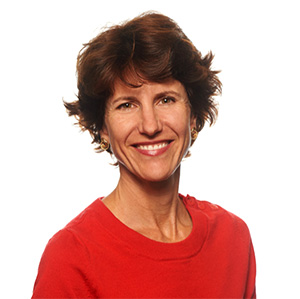UNCDF and Convergence: Getting the Right Blend in Game-Changing Finance
 In December of 2015, the global news website, Quartz, published a piece entitled “Both Venture Capitalists and Banks are Betting on Blockchain.”
In December of 2015, the global news website, Quartz, published a piece entitled “Both Venture Capitalists and Banks are Betting on Blockchain.”
In the five or so years since this piece was posted, the debate over blockchain persists — whether it is hope or hype, future or fraud, promising and scalable or inefficient and forgettable. What has driven this intense debate is the contention that blockchain is more than merely an innovative technology — that it represents a game-changer in how we transfer data, conduct transactions or share information.
Perhaps the closest analogy in the development finance space involves blended finance, which Convergence defines as “the use of catalytic capital from public or philanthropic sources to increase private sector investment in sustainable development”.
While the discussion surrounding blended finance is not as heated as the debate over blockchain, the subject has similarly taken over much of the conversation space in the area of development finance. And like blockchain, what drives the blended finance conversation is the contention that it represents a game-changer. In this case, a game changer in its potential to catalyse private capital towards investments that would otherwise be overlooked — namely investments in developing countries generally and least developed countries (LDCs) in particular — delivering on return-on-investment and the development impact that defines the Sustainable Development Goals (SDGs) agenda.
On the basis of existing results, however, the sceptics of blended finance have more to hang their hat on than the believers when looking at its ability to drive finance to the places hardest to reach.
UNCDF and Convergence collaborated on a report in 2019, Blended Finance in the Least Developed Countries 2019, which detailed the state of blended finance in the context of LDC transactions. Just six percent of the total private capital mobilised globally by official development finance over the 2012-2017 period benefited LDCs, according to OECD data. (This is not necessarily “underweighting” relative to the size of their economies, though it is small relative to the amount of official development assistance, or ODA, received by LDCs.)
In the report The State of Blended Finance 2019, published by Convergence, the percentage of transactions in low-income countries that were blended finance in nature fell significantly; from 43 percent for the 2010-2012 period to 26 percent for the 2016-2018 period. This reality exists within a context where ODA is at best stagnant, and at worst avoiding the areas where it is most needed.
The OECD reported last year that ODA dropped by almost three percent in 2018, with a declining share going to the neediest countries. Overall, the investment needs for LDCs to achieve the SDGs is three times the existing level of total capital investment into LDCs, according to the UN Conference on Trade and Development (UNCTAD).
But none of this means that it is time to place blended finance in the category of “hype” and look for other solutions. One of the most important things to remember is that blended finance, particularly in the development context, is still in its early days. Until the Addis Ababa Action Agenda — the international conference held in 2015 that laid out the foundation for SDG financing — there were practically no communities of practice or profound contemplation on the subject of blended finance and sustainable development. Now that we have had five years to consider blended finance’s role in sustainable development, there are a few new strategies that both donors and investors can consider when pursuing blended finance solutions to deliver sustainable development to the areas that need it most.
Taking a Portfolio Approach
Theoretically, blended finance is an attractive proposition. Concessional capital from a government or philanthropic organisation can absorb the early losses tied to risky investments. This makes the risk-adjusted return on the riskier investments more palatable to investors with large amounts of capital — including institutional investors and pension funds. And while these sources of capital investment should be targeted for development-oriented investments, it does not mean that blended finance is always the best solution.
One reason is the size of the transactions in developing countries and LDCs. In many instances, it is simply not big enough for traditional investors, meaning that executing an investment would simply not make business sense relative to the costs. Separately, these groups of investors often lack the boots on the ground in, or deep knowledge of, developing and LDC markets. So even if the cost of the transactions were not prohibitive, the perceived risk of the investment — just as often as the actual risk — can still prevent the unlocking of commercial capital.
This does not mean that blended finance can never be used for investments in developing and least developed countries; and of course, we should do all we can to help investors separate the perceived risks of investing in these markets from actual risk. There is also scope for financial engineering to deliver scale and reduced risk, for example by blending within large investment funds whose money goes down either directly into small transactions or into smaller, lower cost, and more nimble local funds.
But donors need to accept that blended finance is not always going to be the best solution to finance a given transaction in these geographies. And in a context where ODA is an ever finite, if not shrinking, resource, donors would be better served if they adopted a portfolio approach towards blended finance transactions.
Such an approach calls on donors to assess their development projects in the context of the portfolio as a whole, not as a set of disconnected, individual investments. More to the point, it means lining up projects and strategically deploying ODA in a holistic fashion. A portfolio approach involves concentrating your ODA on the riskiest investments and preserving your blended finance deals for those projects that are a bit more palatable.
Despite the downward trend of ODA, the fact that it can be deployed as purely concessional capital gives it an essential and irreplaceable purpose. Deploying more ODA towards a very risky investment, versus less ODA in the hope of unlocking private capital, can be the best way to use those precious funds.
In essence, this is a Ricardian argument on comparative advantage. When parties trade in goods or services on the basis of what each party is able to produce most effectively, the resulting efficiency produces an all-in economic gain. Donors should probably not be trying to induce private sector investment in the most extreme of situations where they, and only they, have the type of capital that can enter these situations.
Communities of Practice
The concept of blended finance is not new. Investment transactions of this nature have been around for at least 50 years, even if we did not call it blended finance. But today, while it is increasingly becoming a tool of development finance, communities of practice only recently emerged surrounding it. The easiest proof is the fact that there are still varying definitions of what blended finance is.
At a practical level, this means that the field has not yet truly leveraged those actors with specific capabilities in blended finance to ensure that they apply their skills and capital in a tailored, impactful way.
Fortunately, more and more official donors are looking to blended finance to drive impact. As sub-sets of donors emerge with specific interests within blended finance, they need to be able to easily identify blended finance structures and transactions that fit with their specific comparative advantages — whether on the basis of instrument used; geographic area or region; an investment sector, or a development theme, such as scale, LDCs, or gender.
Institutions such as the Swedish International Development Co-operation Agency, Sida, have an edge in the issuance of guarantees in complex, structured transactions such as the IFC Managed Co-Lending Portfolio Programme. Others have strong institutional connections to the host governments where they work. The Millennium Challenge Corporation, for instance, operates through compacts with host governments that allow it to push for investment environment changes that facilitate the major infrastructure projects it supports. Leveraging comparative advantage in this space will go a long way towards ensuring that the right blended finance transactions are being executed, in the right places, in the right ways.
Do Not Overlook Local Capital
International capital markets would seem to offer some solutions for those in the development finance space seeking to mobilize additional money into the SDGs. The trillions it would take to close the annual SDG financing gap for developing countries is still a fraction of the global financial assets that are traded daily. But this capital is also very difficult to access for riskier investments in developing countries and LDCs. Institutional capital of this nature is looking for scale, predictable returns, replicable vehicles, and oft-invested markets.
This does not mean ignoring such markets, but it does mean not overlooking local capital markets. Many developing countries and LDCs simply do not have developed local capital markets. But where there are local capital actors, they may very well represent the appropriate sources of capital for a blended finance transaction. These sources of capital are often investing in safer bets, notably government bonds. So, a blended finance transaction with its first-loss cushion involving a local project can be quite suitable for a local bank to invest in. In addition, local capital can be deployed without incurring any foreign exchange risk.
One particular kind of investment where this can be impactful involves SMEs, specifically in LDCs. For SMEs in these markets to scale, their capital needs are typically between $50,000 and $1m. Of course, it doesn’t make sense to blend $50,000 at a time, which is why many blended finance structures designed to invest in SMEs typically blend different forms of capital in an intermediate vessel first (a financing facility or fund), which then makes smaller investments into SMEs.
A good example is Aceli Africa, a financing facility designed to improve local lending to agricultural SMEs in Africa. Once operational, it intends to do this by offering financial institutions cash incentive payments to defray the high operating costs, and a risk-sharing mechanism to reduce lenders’ exposure.
Reverse Engineer
Between the SDGs becoming mainstream and the increasing awareness of the impact investment market — the Global Impact Investors Network estimates the size of the market at just over $500bn — the desire for investment tools and products that provide return on investment and SDG impact is growing.
But to better entice the private sector, it’s critical for donors who are engaged in blended finance to adapt their products to the needs of the private sector. They need to look first at the type of investor they need to energise, understand the constraints on that investor type, and then mould, or reverse engineer, their own offering to those commercial requirements. Donors mostly have a fixed set of products and it falls to the private sector investor to figure out how and whether to use them.
UNCDF has been involved in two blended finance vehicles designed to invest in SDG-oriented projects in developing and least developed countries. One vehicle — the BUILD Fund — focuses on capitalising early stage companies and SMEs in LDCs. A separate vehicle — the International Municipal Investment Fund (IMIF), managed by the infrastructure investment and global asset manager, Meridiam; and created by UNCDF, United Cities and Local Governments and the Global Fund for Cities Development — is a bespoke fund. It is designed to focus exclusively on supporting cities and local governments; notably municipalities in developing countries, including the least-developed countries.
Both funds rely on first loss tranches to catalyse commercial capital into the mezzanine and senior tranches, which will be protected from early losses.
Blended finance is, by no means, a panacea to achieve the SDGs. But there is no path to sustainable development reaching the places with the greatest development needs without private capital, which will not be accessible unless an array of game changing tools is deployed.
Blended finance can be one of those game-changing tools, but only if it is utilised in a game-changing fashion. With 10 years to go until the 2030 deadline of the SDGs, there is little time to waste.
About the Authors

Author: Joan Larrea
Joan Larrea is CEO of Convergence Blended Finance, the global network for blended finance. It generates blended finance data, intelligence, and deal flow to increase private sector investment in developing countries.

Author: Laura Sennett
Laura Sennett is policy specialist with the United Nations Capital Development Fund, which makes public and private finance work for the poor in the 47 least developed countries.
About UNCDF
UNCDF offers “last mile” finance models that unlock public and private resources, especially at the domestic level, to reduce poverty and support local economic development. UNCDF pursues innovative financing solutions through: (1) financial inclusion, which expands the opportunities for individuals, households, and small and medium-sized enterprises to participate in the local economy, while also providing differentiated products for women and men so they can climb out of poverty and manage their financial lives; (2) local development finance, which shows how fiscal decentralization, innovative municipal finance, and structured project finance can drive public and private funding that underpins local economic expansion, women’s economic empowerment, climate adaptation, and sustainable development; and (3) a least developed countries investment platform that deploys a tailored set of financial instruments to a growing pipeline of impactful projects in the “missing middle.’’
About Convergence
Convergence is the global network for blended finance. We generate blended finance data, intelligence, and deal flow to increase private sector investment in developing countries, and accelerate advances in the field through our Design Funding Program to achieve development at scale. Convergence’s global membership includes over 200 public, private, and philanthropic investors as well as sponsors of transactions and funds. To learn more, visit www.convergence.finance.
You may have an interest in also reading…
Braggarts Become Leaders
By Hillary Rosner, a freelance journalist based in Boulder, Colorado. Based on the research of Ernesto Reuben, Pedro Rey-Biel, Paola
Brazil: Arrest of Fraudsters Decreases Deforestation Rate
One man can make a difference. Since Brazilian authorities in August 2014 issued an arrest warrant and forced Ezequiel Antônio
Dr Rachid Yazami: A Battery-Powered Future
Dr Rachid Yazami almost single-handedly invented a global business now worth some $15bn annually. But, he’s not in it for


















































































